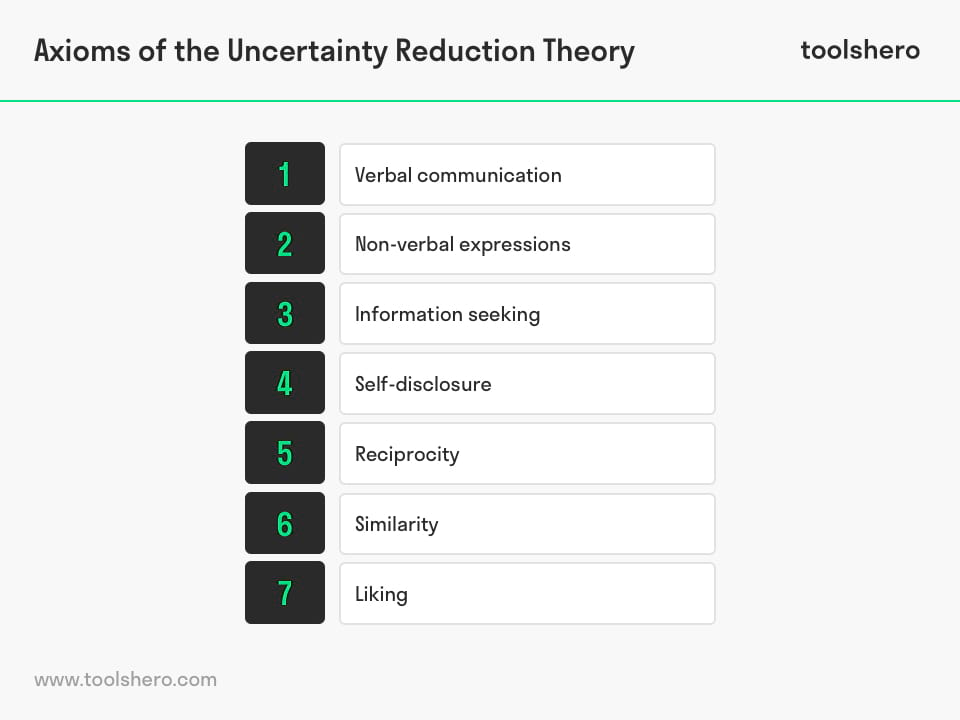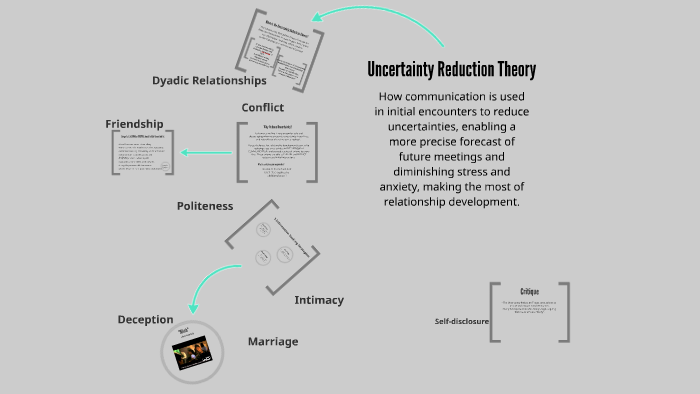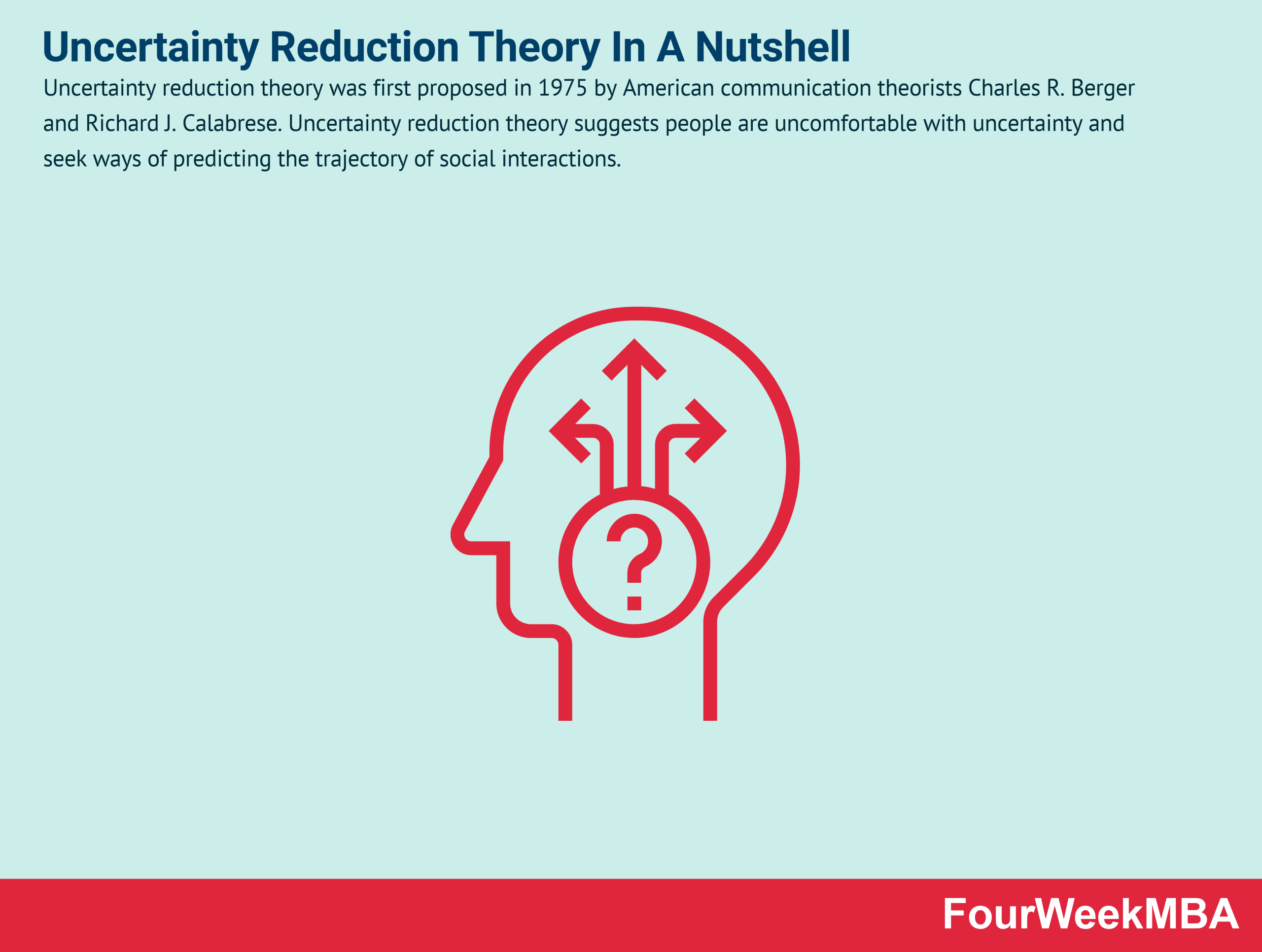Berger Uncertainty Reduction Theory
The uncertainty reduction theory explores the initial interaction between people that occurs before the actual communication process and is hence also known as initial. Calabrese Uncertainty Reduction Theory offered a theoretical perspective for dealing with the initial entry stage of.

Uncertainty Reduction Theory Toolshero
Charles Berger and Richard Calabrese created the uncertainty reduction theory in 1975 As the uncertainty reduction theory progressed into the 21st century the presence of.

. Although there may be conditions under which individuals involved in communication with others may not wish to reduce their uncertainties about those with whom. Survey findings reveal challenges and opportunities for hybrid and remote work. 4 different types of presentations.
Chuck Bergers uncertainty reduction theory URT tries to forecast the future of a relationship on the basis of projected rewards and costs. Uncertainty reduction theory URT was originally created to explain the communication process that occurs when two strangers interact. What is the Uncertainty Reduction Theory.
Uncertainty reduction theory URT was originally created to explain the communication process that occurs when two strangers interact. Berger and Calabrese formulated the following theorems deductively from their axioms. See Chapter 8 Bergers uncertainty reduction theory URT focuses on how human communication is used to gain knowledge and create understanding.
Uncertainty reduction theory otherwise known as initial interaction theory is something that was introduced in 1975 by Charles Berger and Richard Calabrese. Berger and Calabrese argued that as communication increases individuals tend to learn more about one another reducing uncertainty. Charles Berger on Uncertainty Reduction Theory 28528 views Jan 29 2014 152 Dislike Share Save A First Look at Communication Theory 253K subscribers Interview conducted by Em.
Charley Berger and Richard Calabrese created the Uncertainty Reduction Theory in 1975 in an attempt to describe the communication. Uncertainty Reduction Theory by Charles Berger There are a lot of uncertainties in the world. The amount of talking and nonverbal communicative expressions are positively related.
Berger and Richard J. Uncertainty reduction theory is an idea that was written about in 1975 by Charles Berger Richard Calabrese. Charles Berger and Richard Calabrese 1975.
Initially introduced in 1975 by Charles R. Charles Berger through Uncertainty Reduction. Uncertainty Reduction Theory is a communication theory that came about through the research of Charles Berger from the post-positivist tradition.
Uncertainty reduction theory URT was originally created to explain the communication process that occurs when two strangers interact. They also found that should uncertainty. Although there may be conditions under which individuals involved in communication with others may not wish to reduce their uncertainties about those with whom.
It states that people need to reduce uncertainty about other individuals by gaining information about them. It is something we cannot avoid and this is what makes the world fun. The uncertainty reduction theory was developed by Charles Chuck Berger.
Charles Berger and Richard Calabrese 1975. The central idea behind this theory is that when individuals first meet. Berger and Richard J.
F High levels of uncertainty cause increases in. Central to the present.

The Uncertainty Reduction Theory Charles Berger By Estephanie Ortiz On Prezi Next

Sales 101 Uncertainty Reduction Theory And Inbound Marketing Business 2 Community

What Is The Uncertainty Reduction Theory Uncertainty Reduction Theory In A Nutshell Fourweekmba

No comments for "Berger Uncertainty Reduction Theory"
Post a Comment